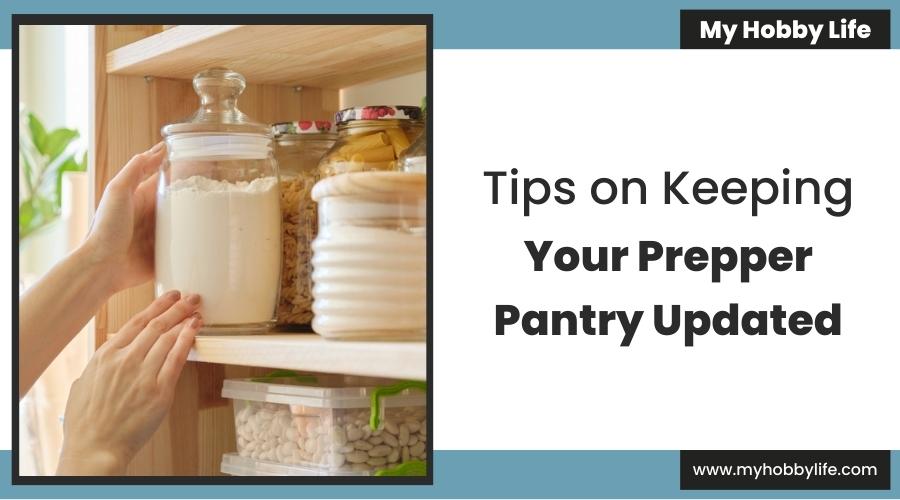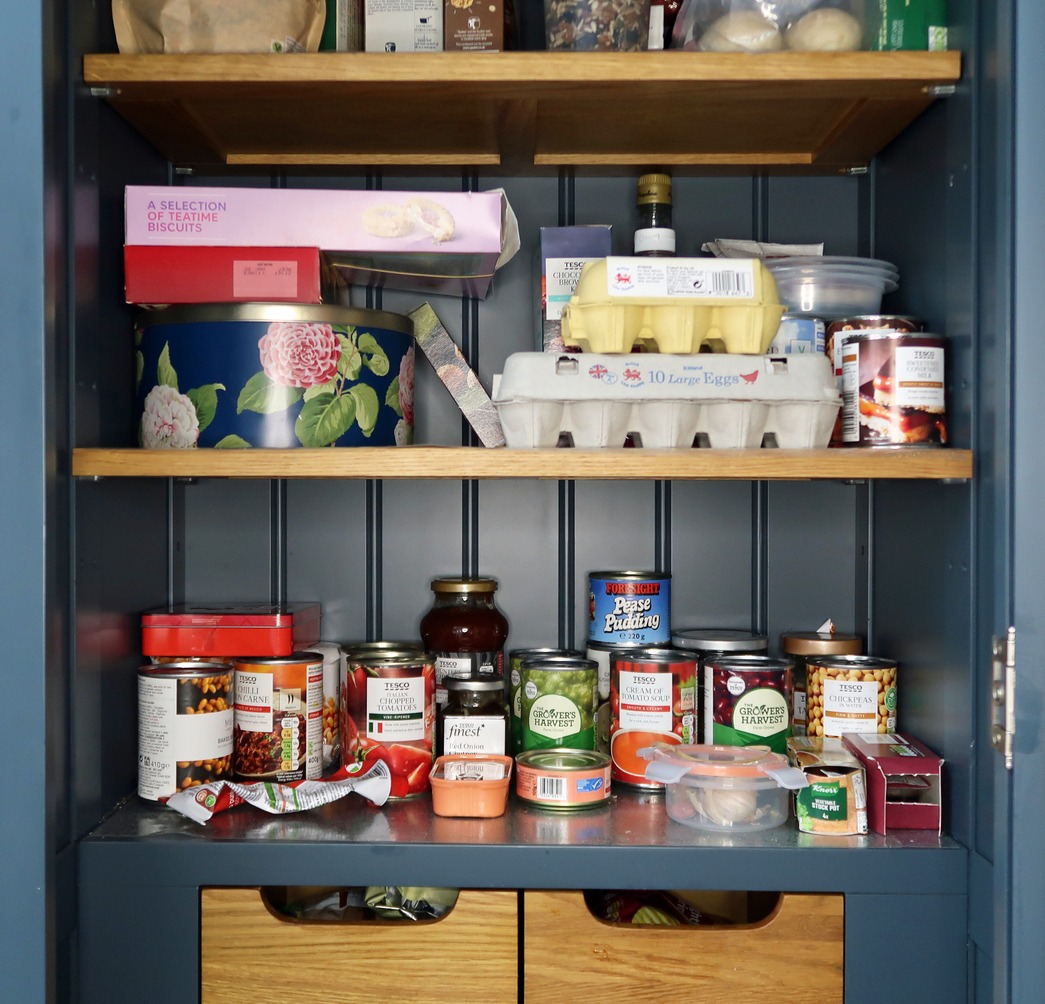Emergencies may occur without knocking on your door, catching you off guard. It is usually preferable to be ready for these situations in advance so that you may easily endure until aid arrives. Emergencies can be handled more easily with emergency kits and a survivalist pantry. However, because many things may have expired or grown obsolete over time, it’s crucial to maintain your survivalist pantry updated at all times.
What exactly is a Prepper Pantry?
A pantry is a container where food and other supplies are kept for later use. It may also contain cooking equipment or cutlery. On the other hand, in any type of emergency, if there are food shortages or delays, a prepper’s pantry preppers pantry is a lifesaver. Except for the fact that it has all the food you need and is made in a way that lasts a long time, a prepper pantry and a regular pantry are very similar.
Canned food, dry rice, beans, frozen food, dried food, and other similar products that could give you enough food to last until aid arrives can all be found in a survivalist pantry. Government organizations evacuate residents from the center of town during hurricanes, so you might also have to leave your house. Because you might need to eat this for the next three days to survive, pack up your survivalist pantry and depart.
Why is a Prepper Pantry Necessary?
Being organized cannot be replaced. You’ll feel more at ease knowing you have extra food on hand in case of need if you prepare in advance. The ability of food banks and other governmental organizations to provide greater resources to care for the most vulnerable members of our society is, however, the most crucial benefit of being able to take care of ourselves, our families, as well as friends and neighbors.
A Prepper Pantry Will Help Whom the Most?
Although a survivalist pantry will be useful to everyone, it is especially advised for those who live in disaster areas. If you live close to a disaster-prone area, you should be ready to handle the worst scenario, especially for those who have young children or elderly family members nearby.
How Much Room Should a Prepper Pantry Have?
Planning what kind of food, you will want to have on hand for a longer period more than just a few months should be your priority. When deciding what kind and how much food to store, you need to take several things into account. Size and space come first. You can keep more food and be prepared for a longer time if you have a spacious pantry. If you’re fortunate, you may have a root cellar, bunker, or basement.
Basic Elements You Must Consider When Keeping Food in Your Pantry
Sunlight
Your canned foods should always be kept in a pantry that is shielded from direct sunlight. Your food will heat up and decay more quickly if it is exposed to the sun. The air in the headspace can expand due to the heat created inside the cans. As a result, the seal will be compromised, allowing bacteria to contaminate the food. Depending on the food within, some containers might potentially blow up. You will have to clean up a lot in addition to infecting the other products in your pantry. The rancidity of foods that include fats or oils may be accelerated by sunshine.
Air and Moisture
Due to the low cost of grains, a lot of preppers are stockpiling dry grains in huge amounts. They will have a shelf life of over 30 years if stored properly. You should check the food item’s moisture content before storing any dry goods. If your food contains a lot of moisture, it will create the ideal conditions for the growth of germs, mold, and insects.
In addition to serving as a drying agent, they will stop food oil from getting rancid and block fungi from growing. To get rid of moisture, some survivalists employ desiccants, but oxygen absorbers might be just as useful. When food is exposed to oxygen, it starts to deteriorate, and nutrients are lost quickly. An oxygenated atmosphere is necessary for the growth of fungi and bacteria. Bacteria and fungi won’t be able to survive in an atmosphere devoid of oxygen. You should throw away spoiled food since it poses a major health danger. During a crisis, you want to maintain your health and stay away from food poisoning.
Heat
Every pantry’s worst enemy is heated because it shortens the food’s shelf life. You must always store your food on racks or pallets rather than setting the containers down on the ground to fend off this pest. Additionally, make sure there is room around the jars and canisters for proper ventilation. Even better, you can install a tiny fan that delivers the required airflow and has the right filters. You can stop the cans from sweating inside by turning down the heat in your pantry and providing adequate ventilation. This will help stop the corrosion of the cans. Your pantry should have a temperature of between 40-60 degrees Fahrenheit. The nutrients of the food will deteriorate if the temperature rises above 60°F. Food will spoil more quickly the higher the temperature.
Unwanted Guests
Things get a little complicated when it comes to insects since, even if your grains are sealed inside containers, you still need to protect them from bug eggs and existing insects. Temperatures above 70°F and a humidity level of 40% to 80% are ideal for insect growth. A large majority of the insects that can damage your pantry won’t survive below 50°F. You have two options for getting rid of insects from your grains: freeze them or use oxygen absorbers. The living insects in the grains will perish when frozen, but their eggs will not. To ensure that all bug eggs are gone, the grains must be frozen again after 30 days.
Some people prefer to heat the grains to kill the insects, but heating is trickier to get right because you risk cooking the grains. You can get rid of the insects by heating a layer of grains that is 12-inch-thick at 150°F for roughly 15 minutes, but you run the risk of damaging the grains as well.
You can also purchase grains that have already been washed, but you should still double-check. You can fan the grains to look for impurities. The fragrance of food and any food residue that may still be on the outside of your containers or the floor of your cupboard attract mice and other rodents. This is why it’s crucial to clean your containers and cupboard. Before placing the containers in the pantry, wash them with soap and water.
Keep Checking Regularly
The most crucial advice is probably to regularly inspect the supplies in your preppers’ pantry. Take everything out, clean your preparedness pantry, and inspect for any potential problems once every two to three months. While certain foods do not respond negatively when kept in certain conditions, others can spoil if they are. It is therefore always preferable to check on certain food items.
Additionally, both dry and canned items have expiration dates. You could update them with more recent versions by checking them and replacing any that are out of date. It’s possible that the items you packed yourself don’t have exact expiration dates listed on them, so periodically checking to see whether they’re still OK or if any fungi have grown on them will help you keep your survivalist pantry current.
You will have food waste if the food in your pantry is improperly packaged or kept. Not only would it be a waste of time and money, but your family might go without food. We live in uncertain times, therefore having a solid emergency pantry is essential.


